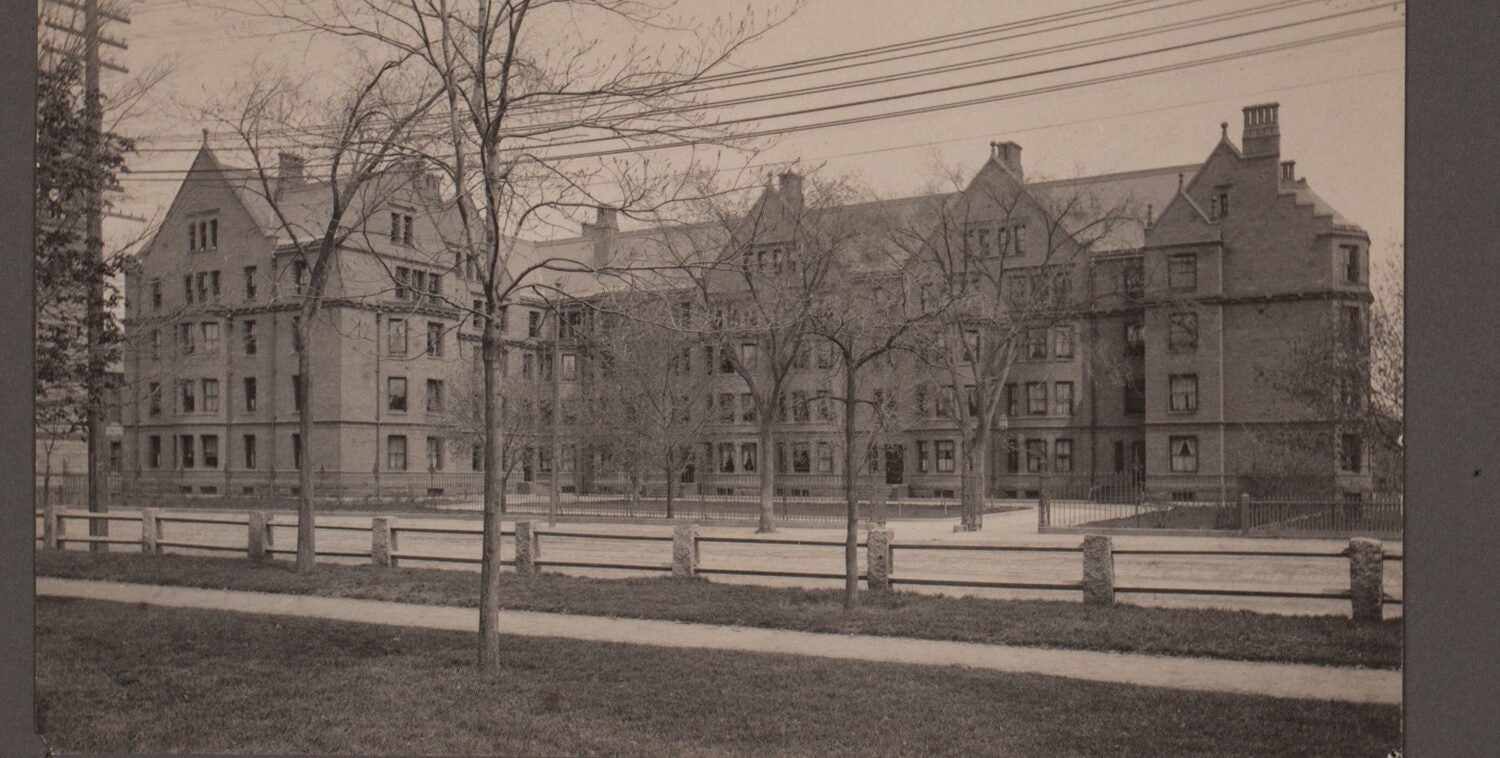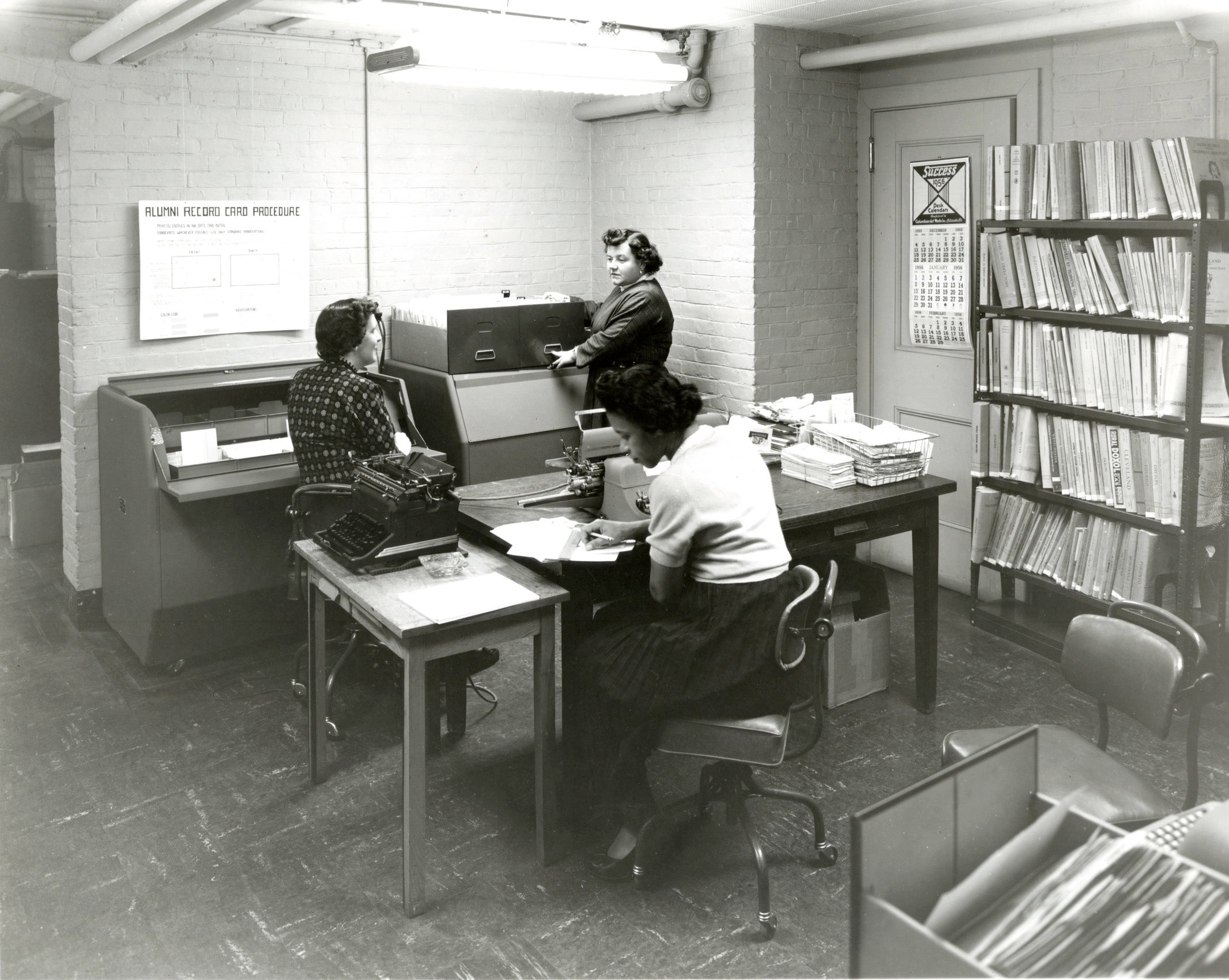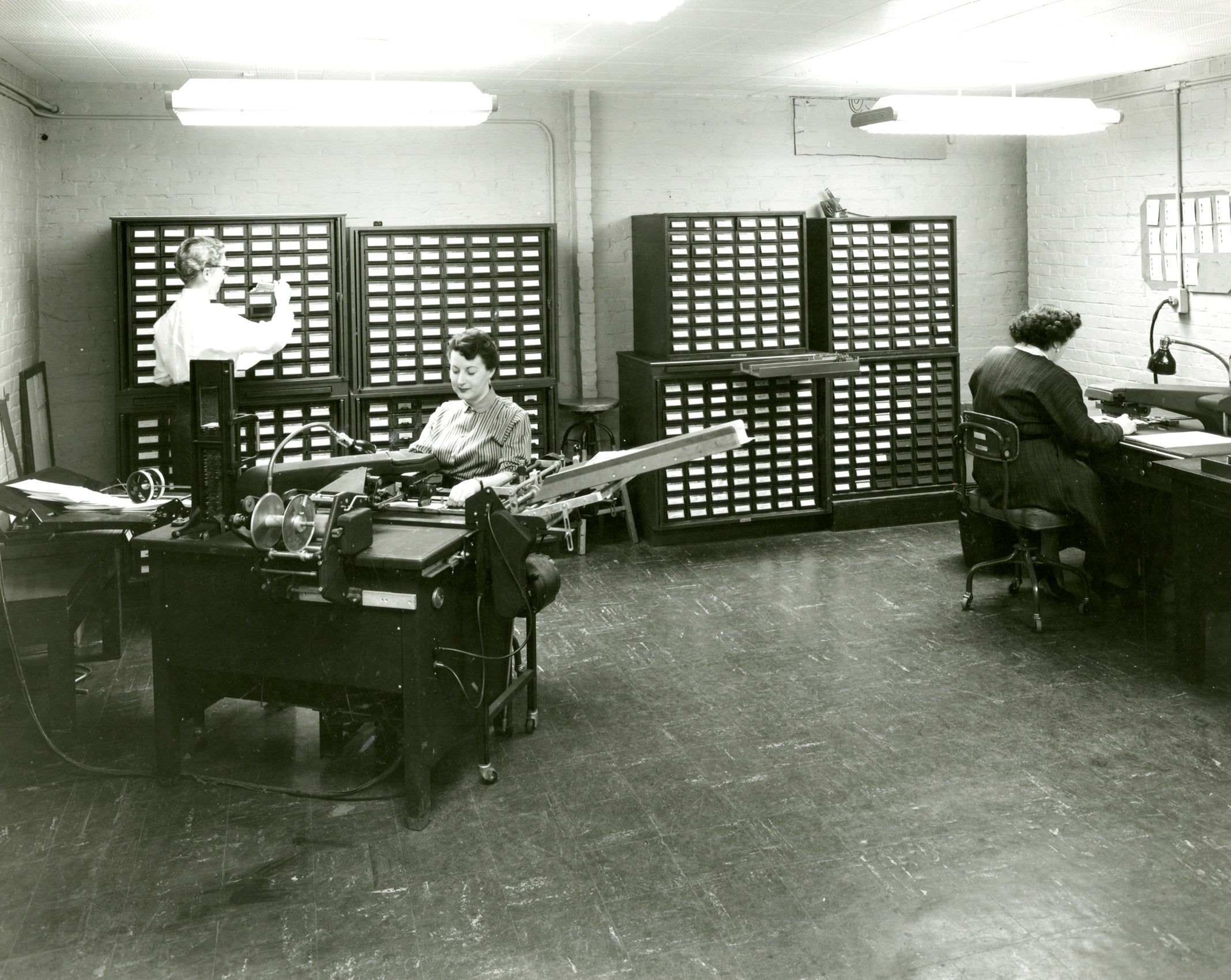Walter Hastings Hall, the oldest active residence hall at Harvard Law School, was built in 1889 to address the need at Harvard University for more student housing.
The land for the building was a gift to Harvard from Walter Hastings, whose ancestral home was located nearby. In his bequest, Hastings asked that the building be called the “Walter Hasting Hall,” in honor of “the testator’s father, grandfather and great-grandfather, all graduates of Harvard.”
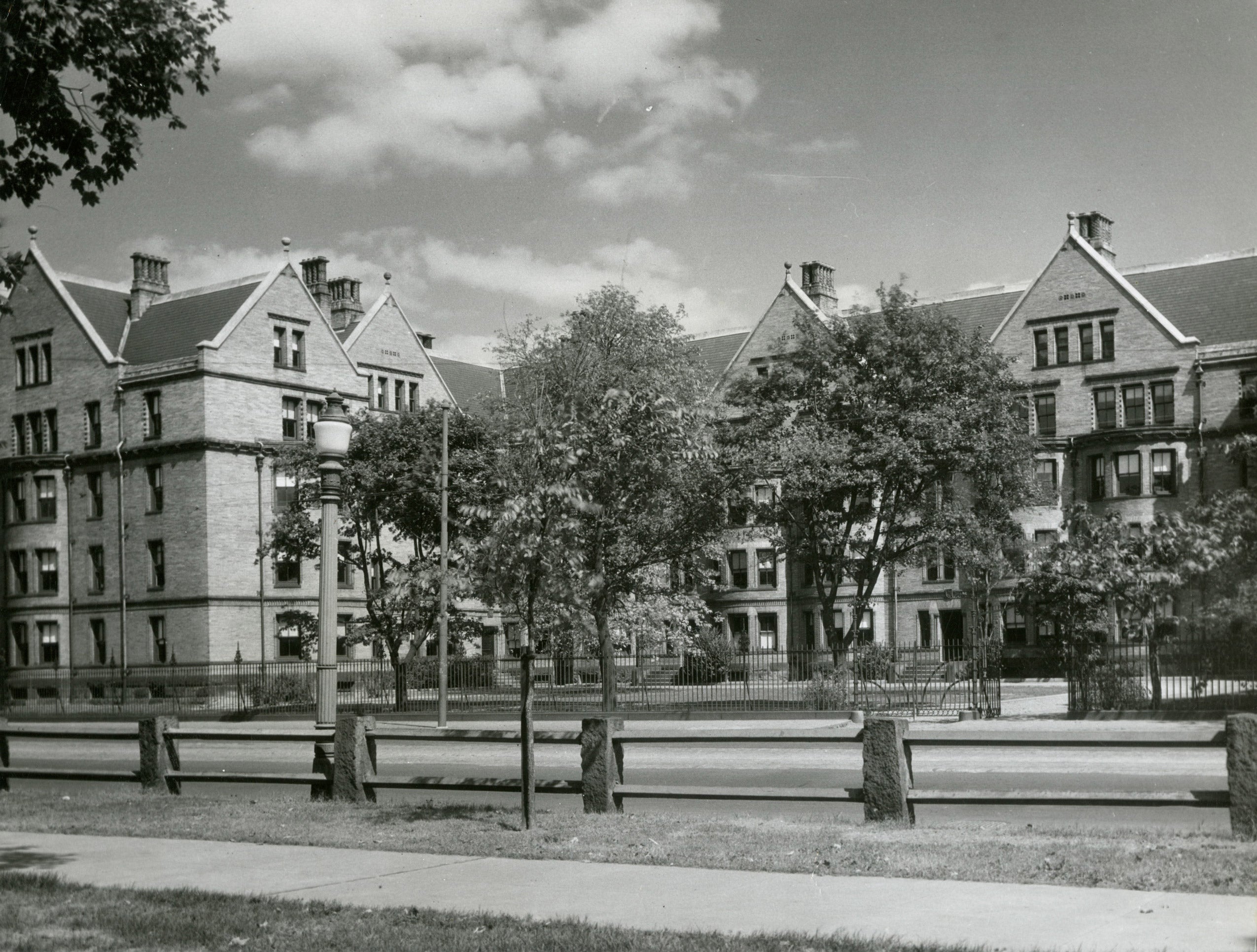
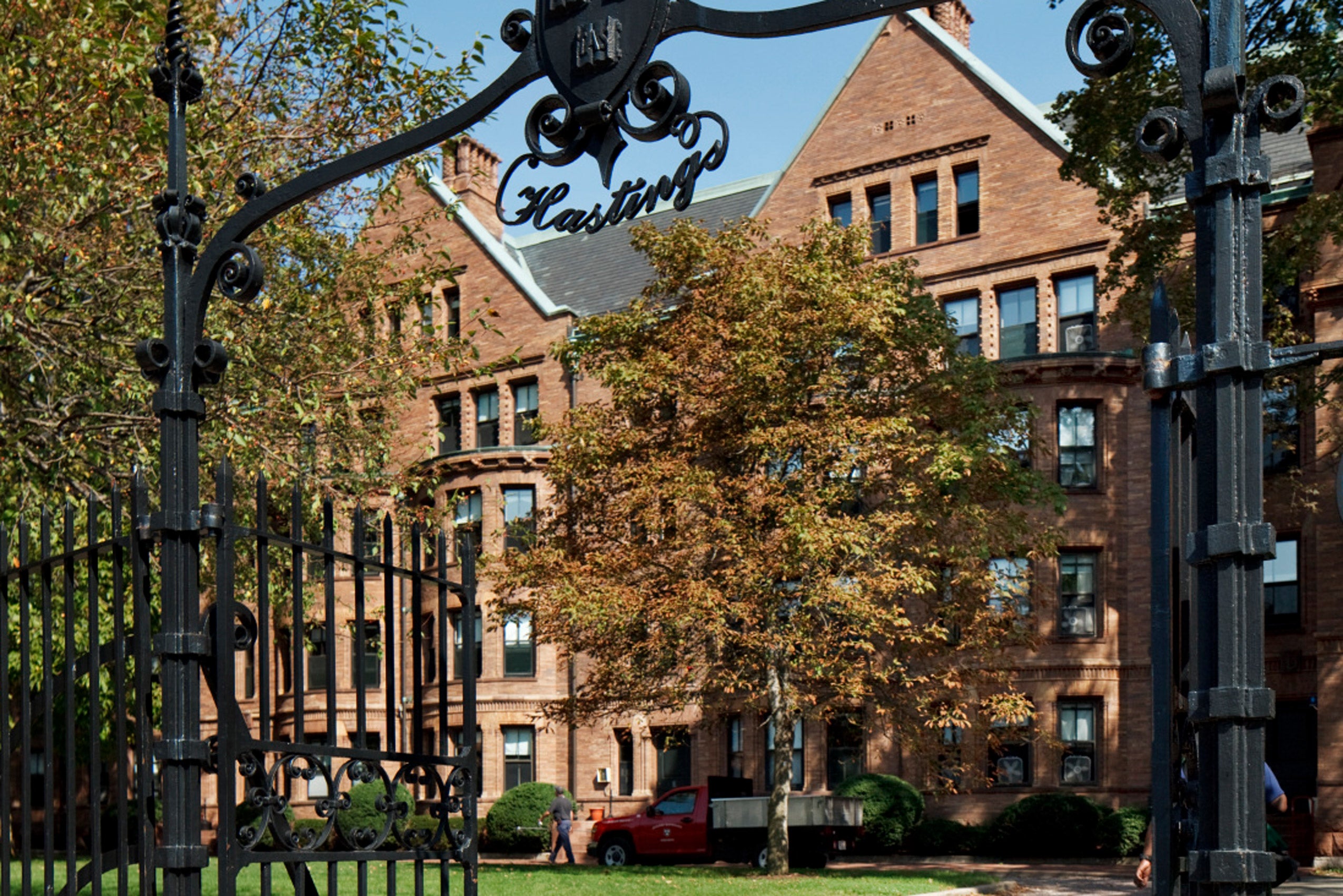
The five-story Queen Anne Revival style dormitory, designed by the Boston architectural firm Cabot and Chandler, is constructed of brown mottled brick and accented with decorative trimmings, numerous gables, and projecting bays.
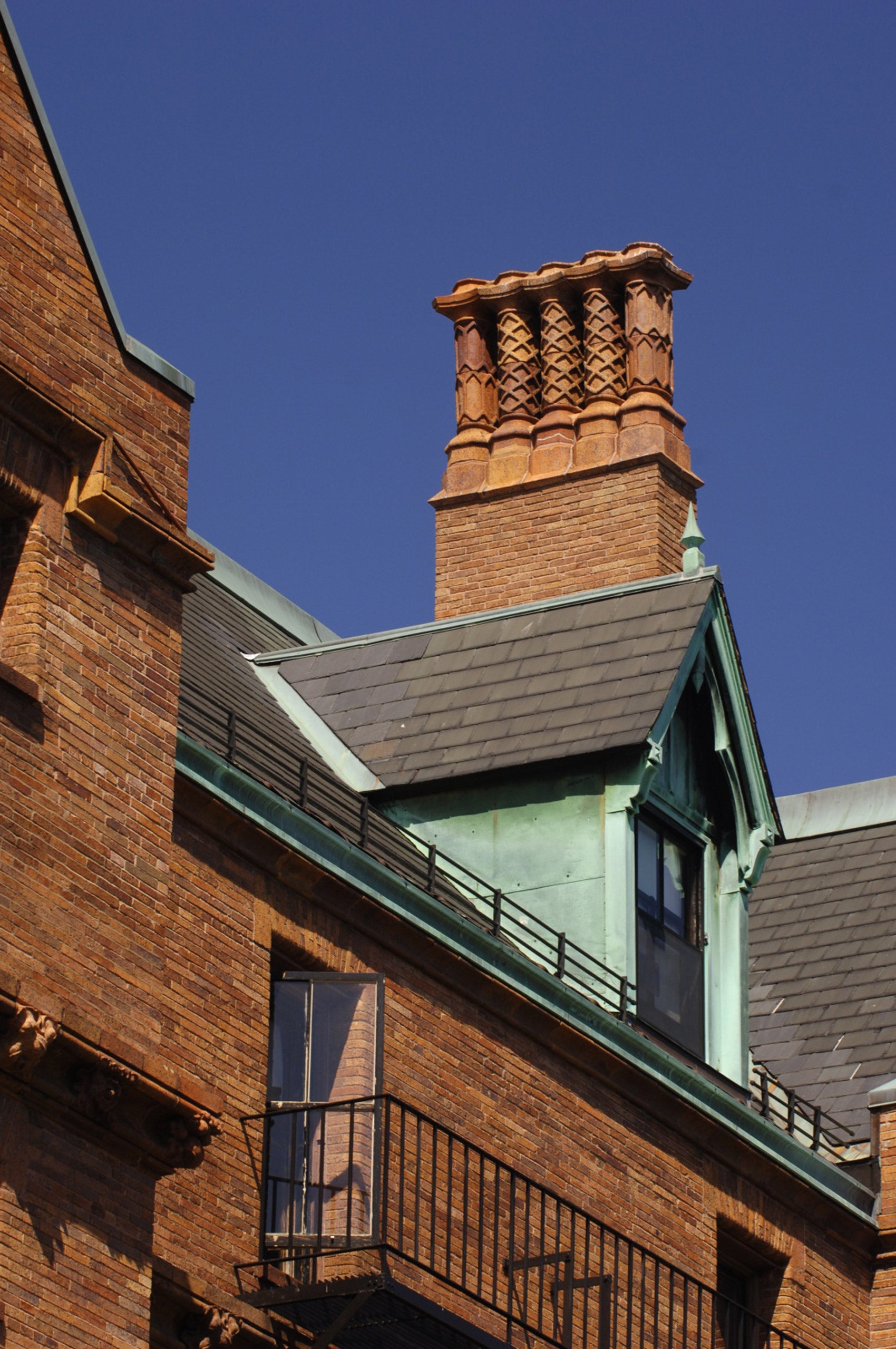
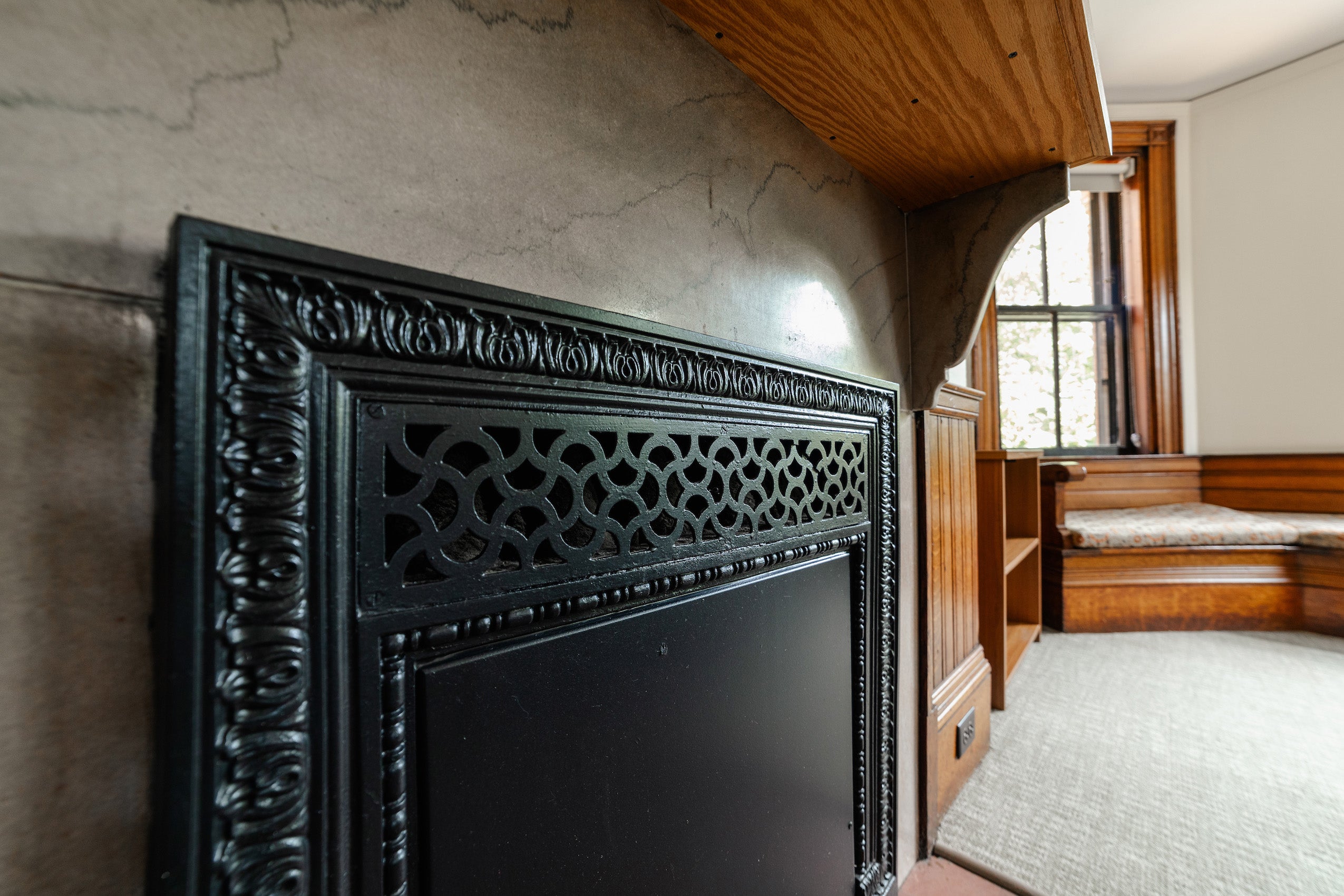

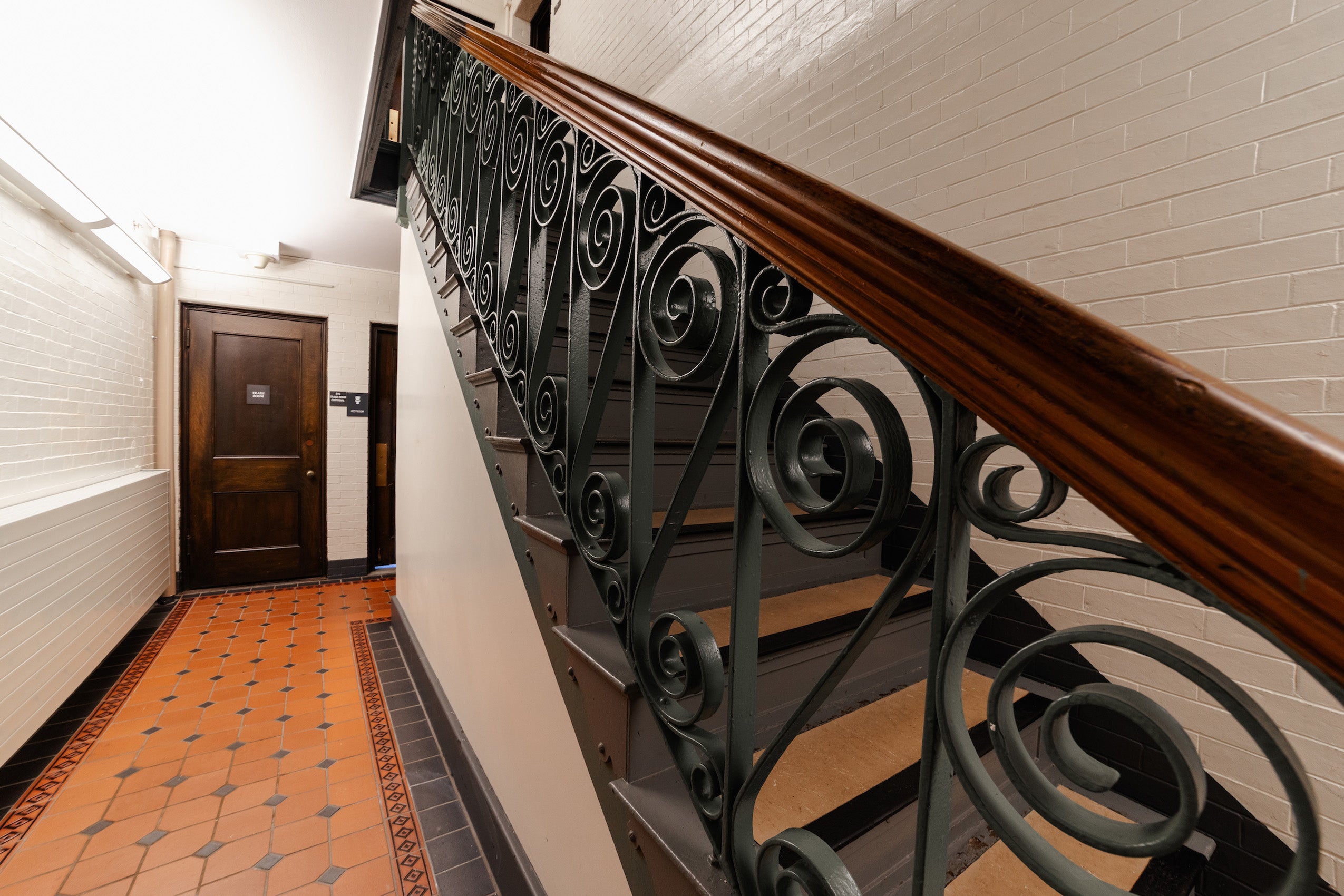
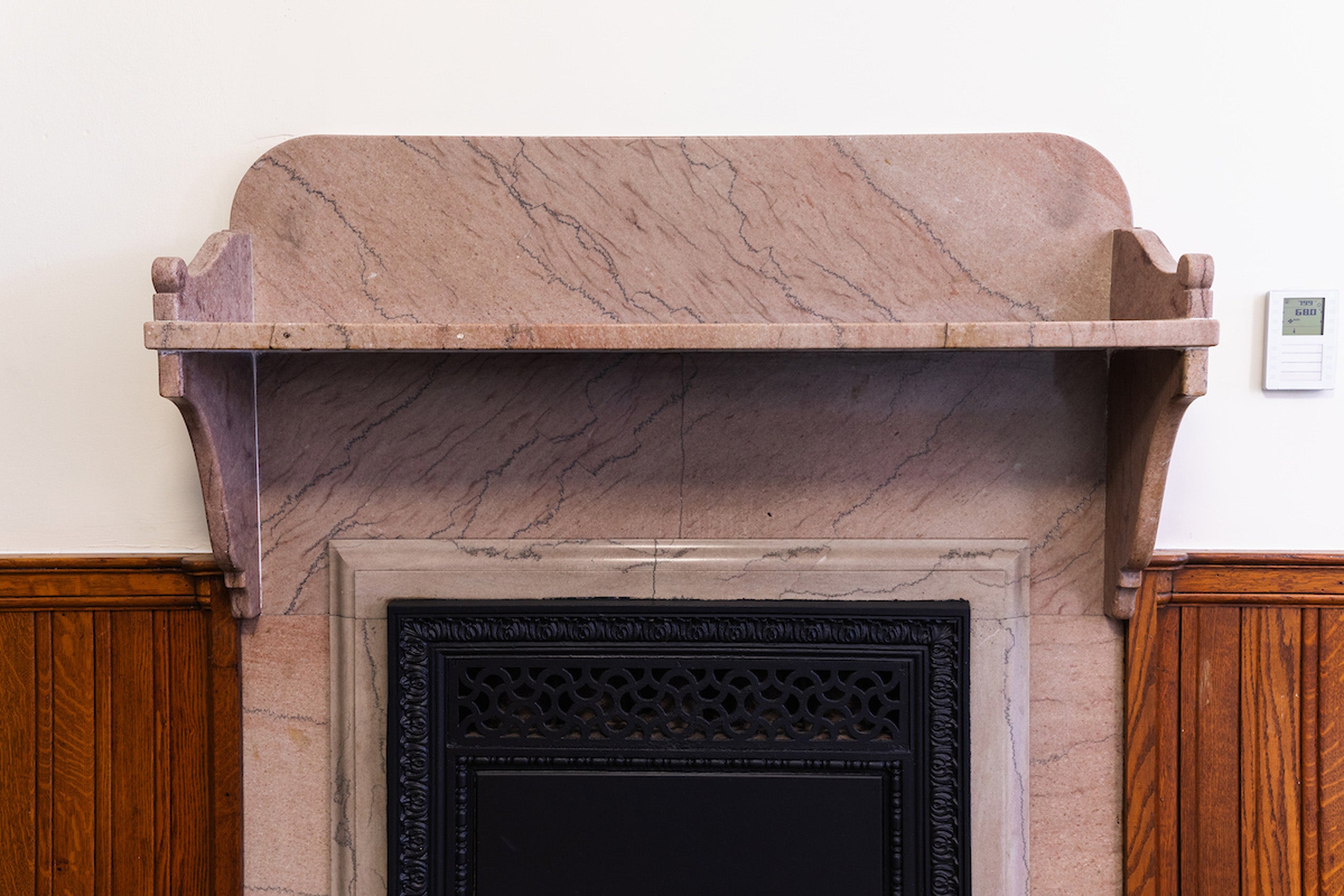
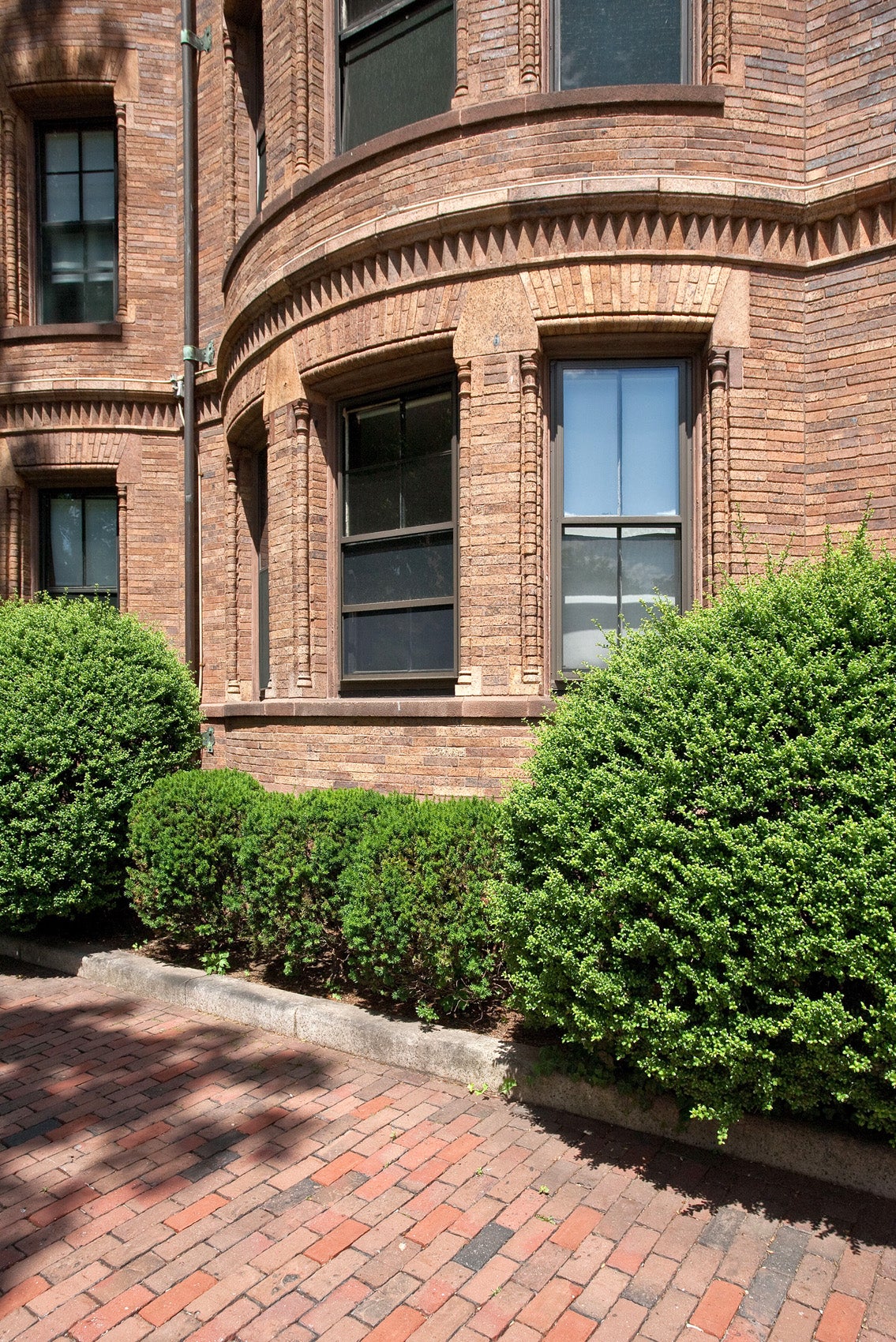
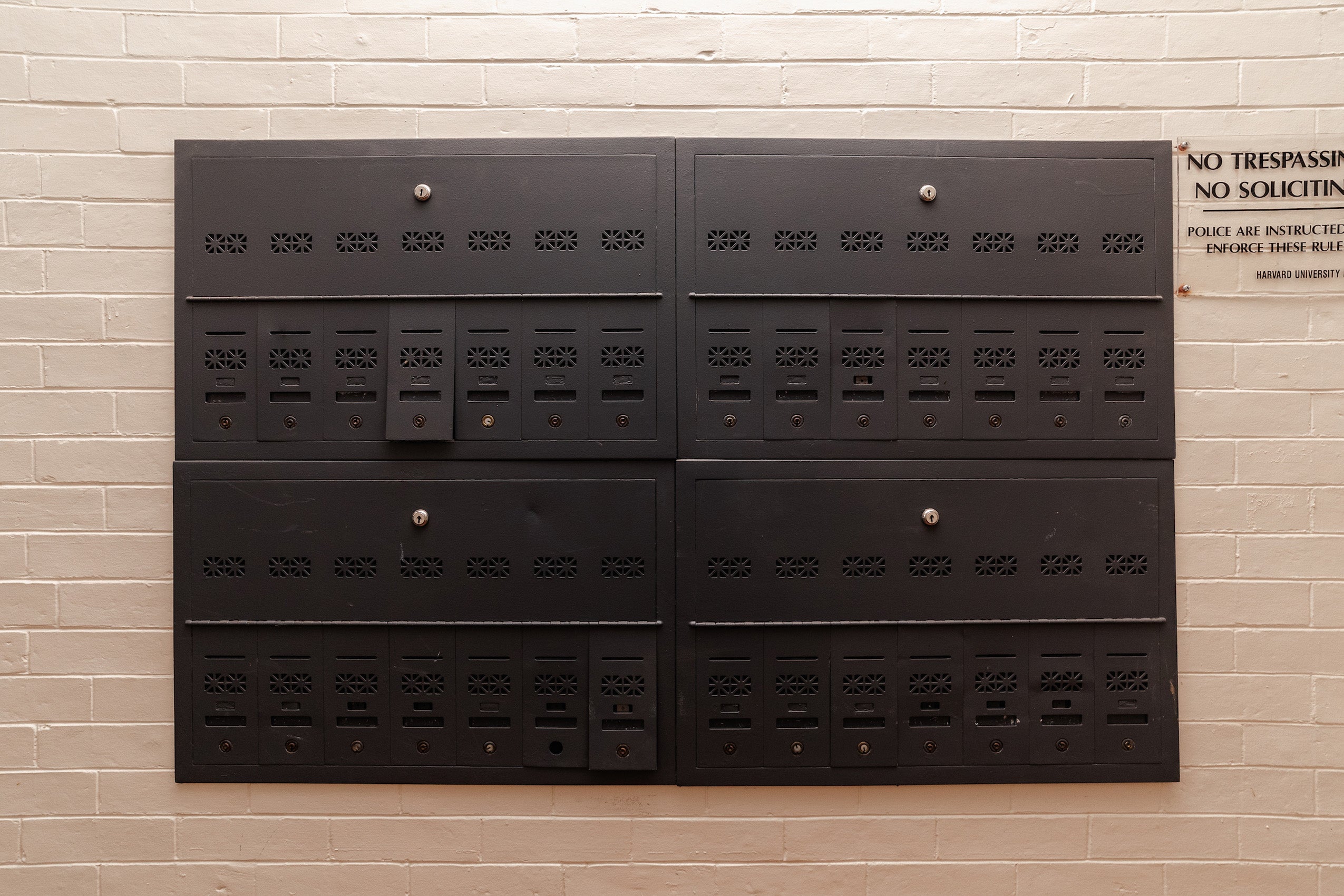
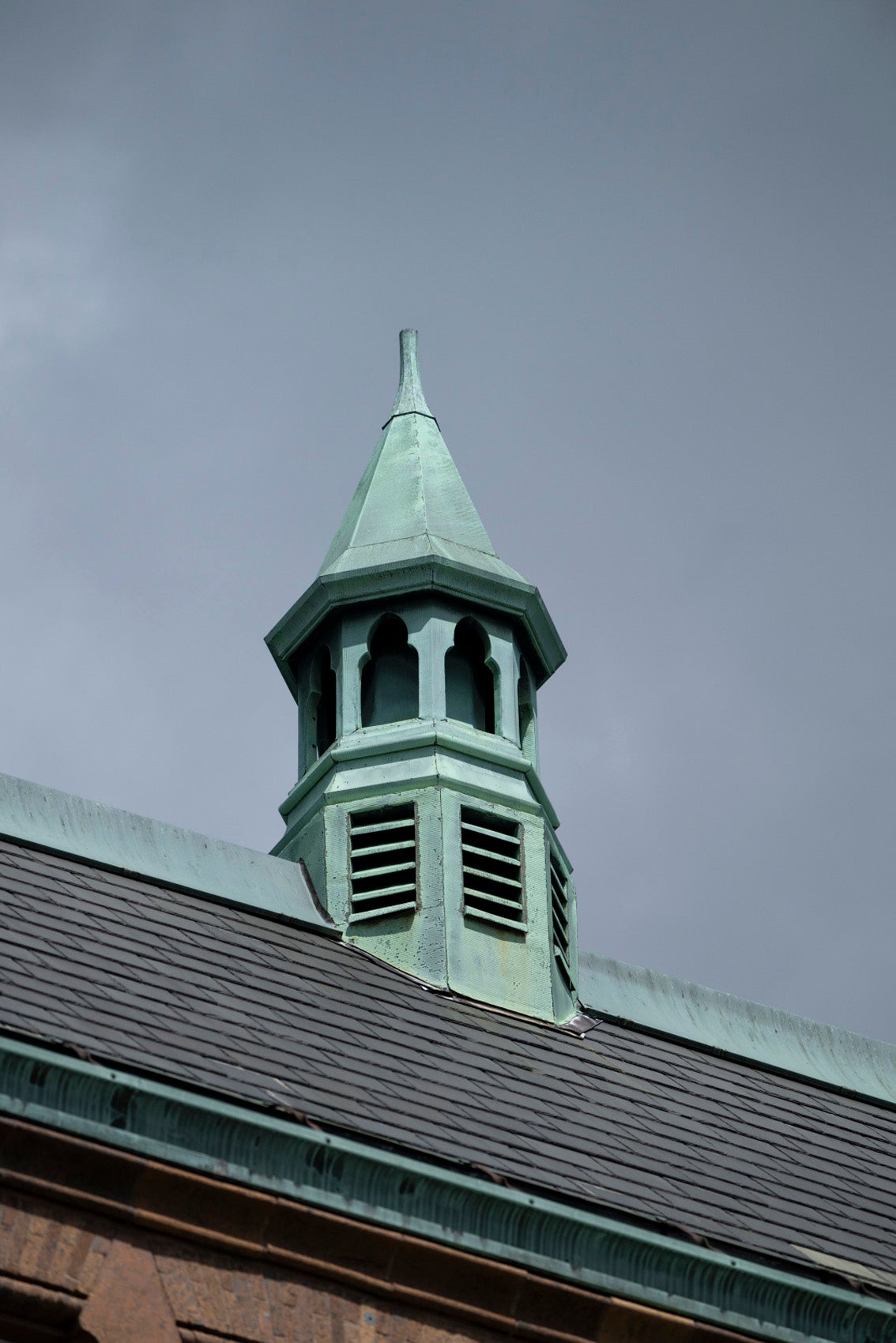
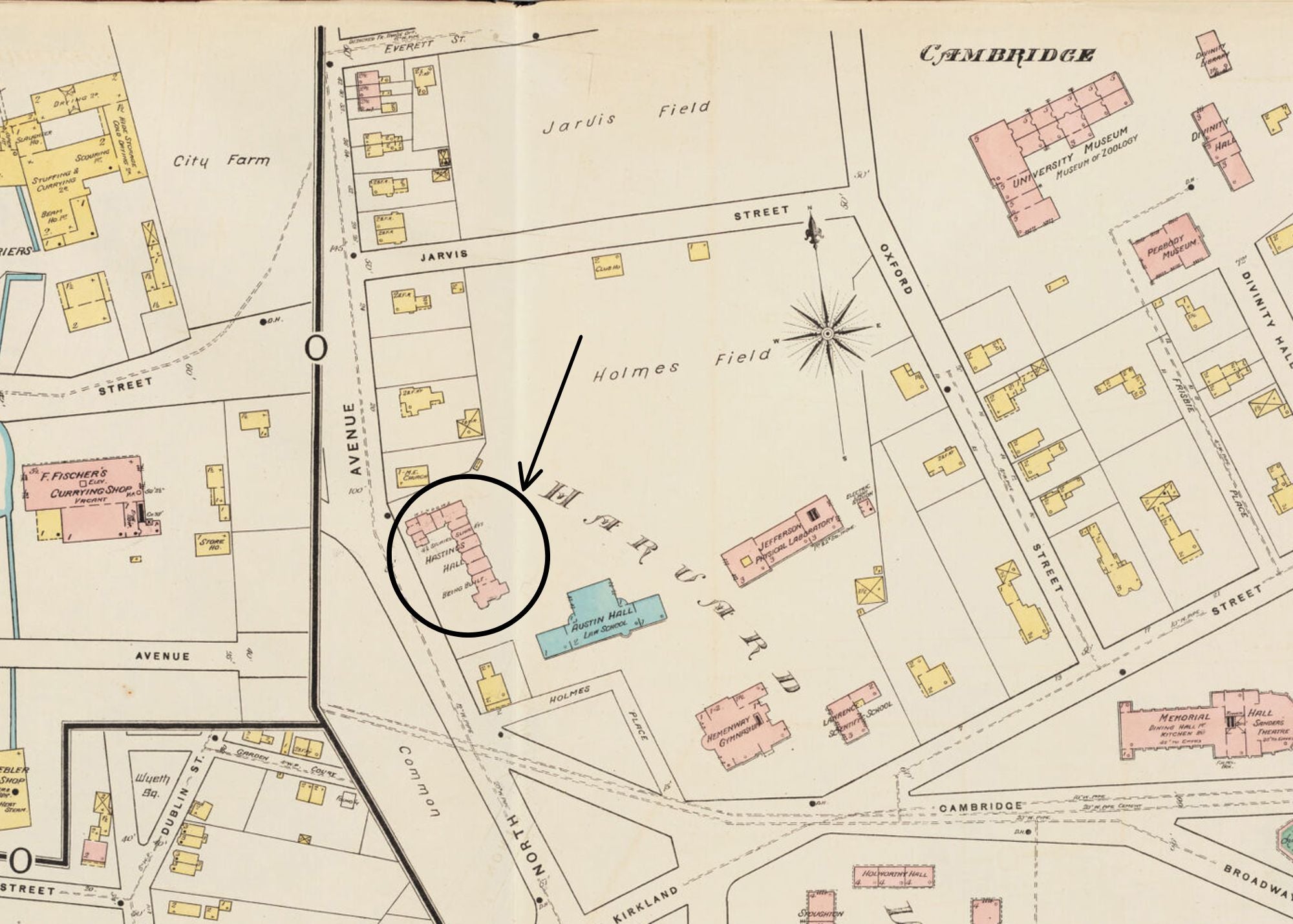
Originally designed to accommodate 115 students, the building offered sixty suites of rooms, some forty five of which were double rooms and the remaining fifteen single apartments.
The Great Boston Fire of 1892, which still ranks as one of the most costly fire-related property losses in American history, was front-of-mind at the time Hastings Hall was built. A Boston newspaper in 1888 noted that the building had seven iron staircases, and that “every possible safeguard against fire had been adopted.”
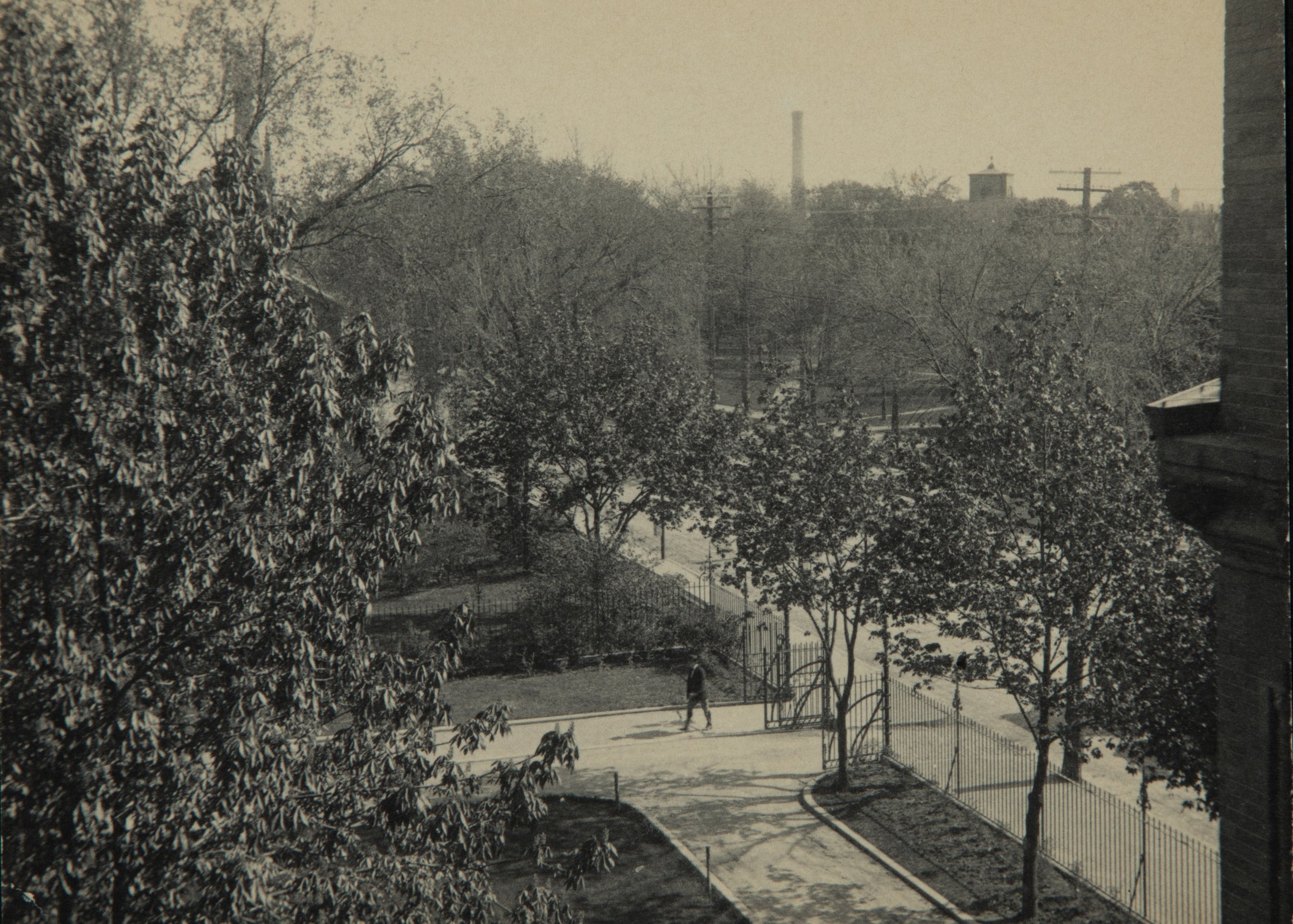

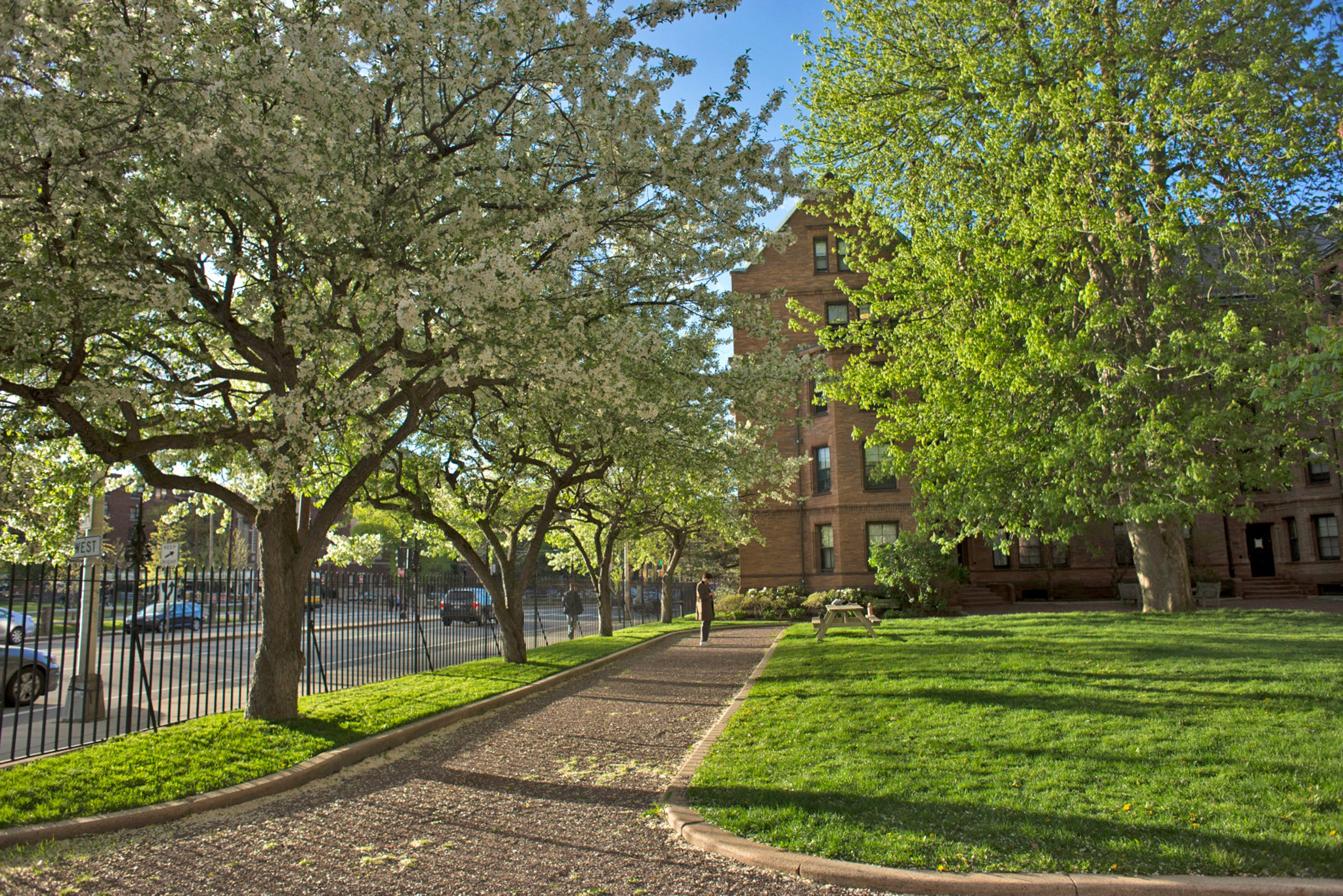
Other amenities in Hastings included hot and cold water throughout the building. Hallways were heated by steam furnished from a boiler in the basement. Rooms were heated via fireplaces, in which either coal or wood could be used. A “lift,” or freight elevator, serviced every hallway from the basement to the top floor.
The building’s west entrance, along Massachusetts Avenue (which was then known as North Avenue), overlooked the Cambridge Common, the historic Christ Church, the Washington Elm, and the Soldiers’ Monument.
The building’s east side faced Holmes Field, which the university used for its principal athletic events. From the mid-1800s until the Harvard Stadium was built in 1903, football games — including “gladiatorial contests” between Harvard, Yale, and Princeton — annually drew thousands to Cambridge.
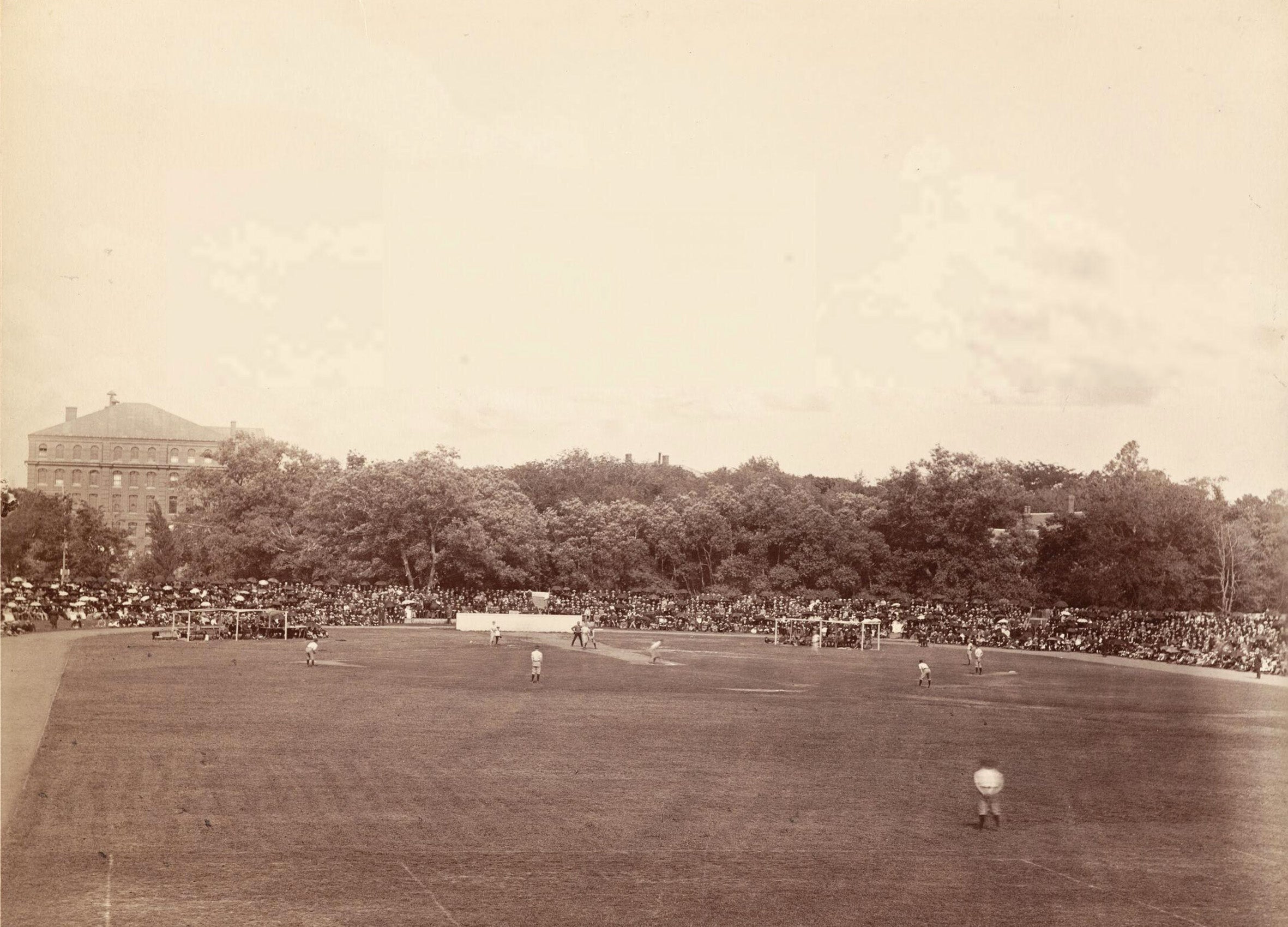
When the dormitory opened in the late-1800s, Hastings Hall housed students from across the university. By the early 1920s, law students began to have housing priority.
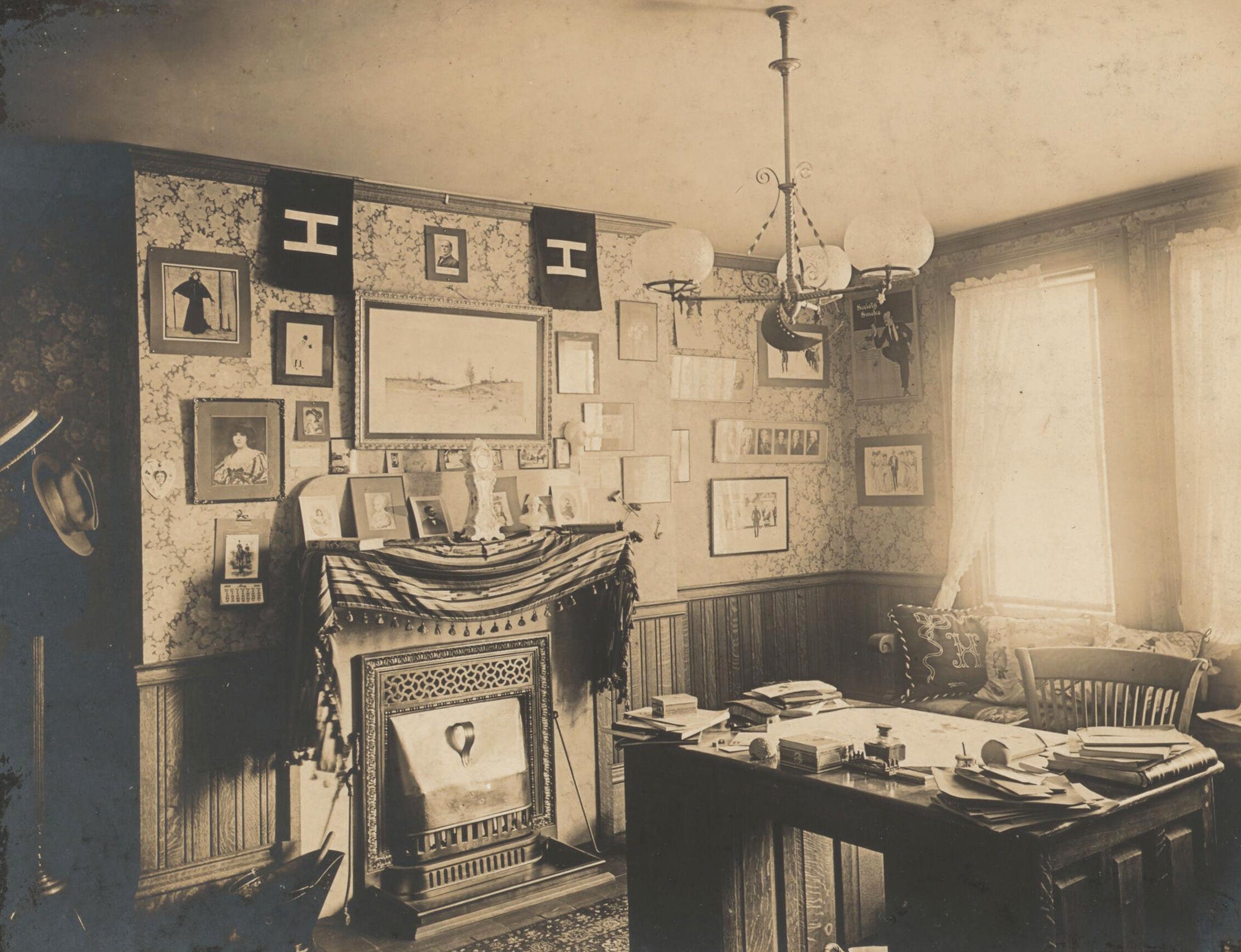
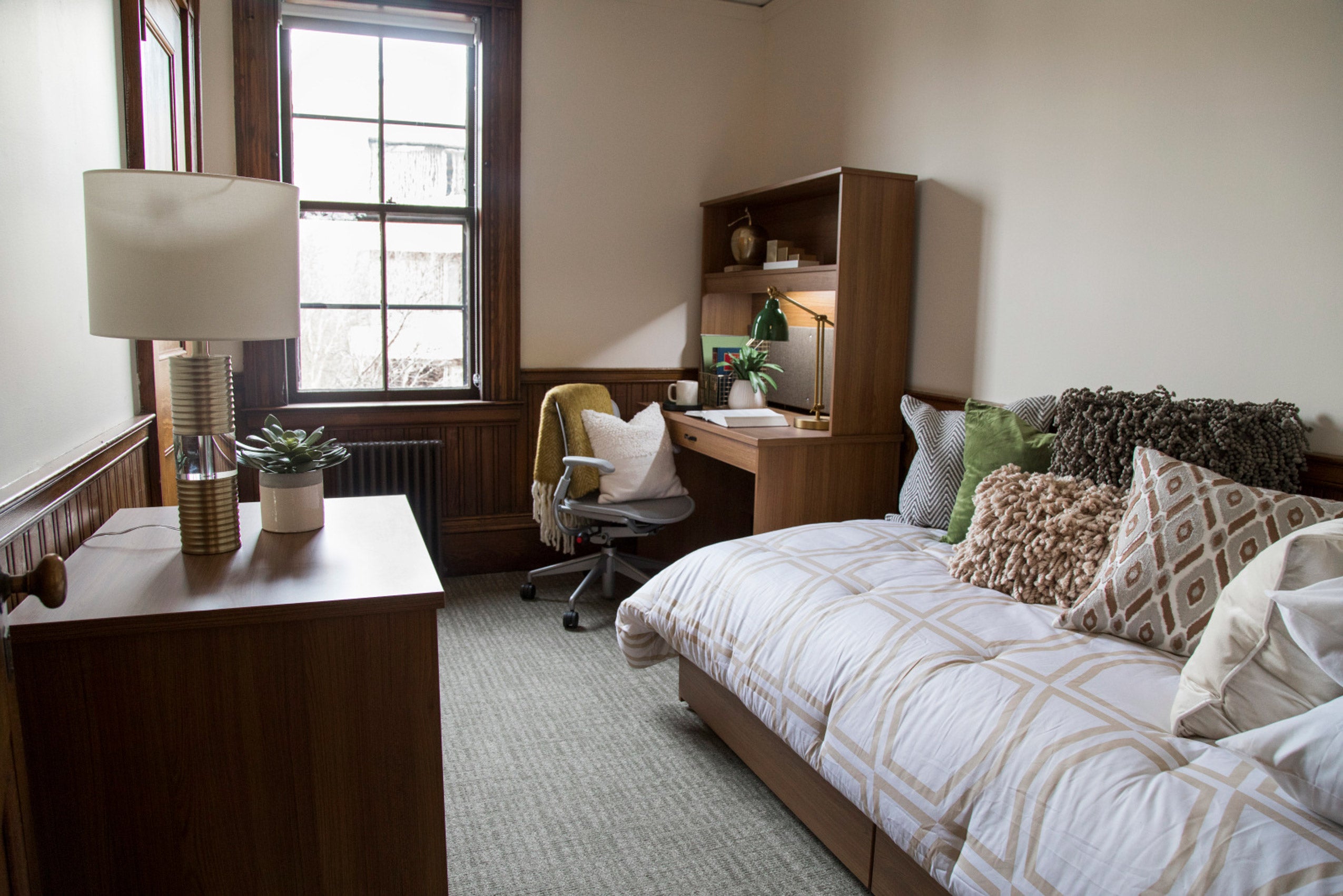
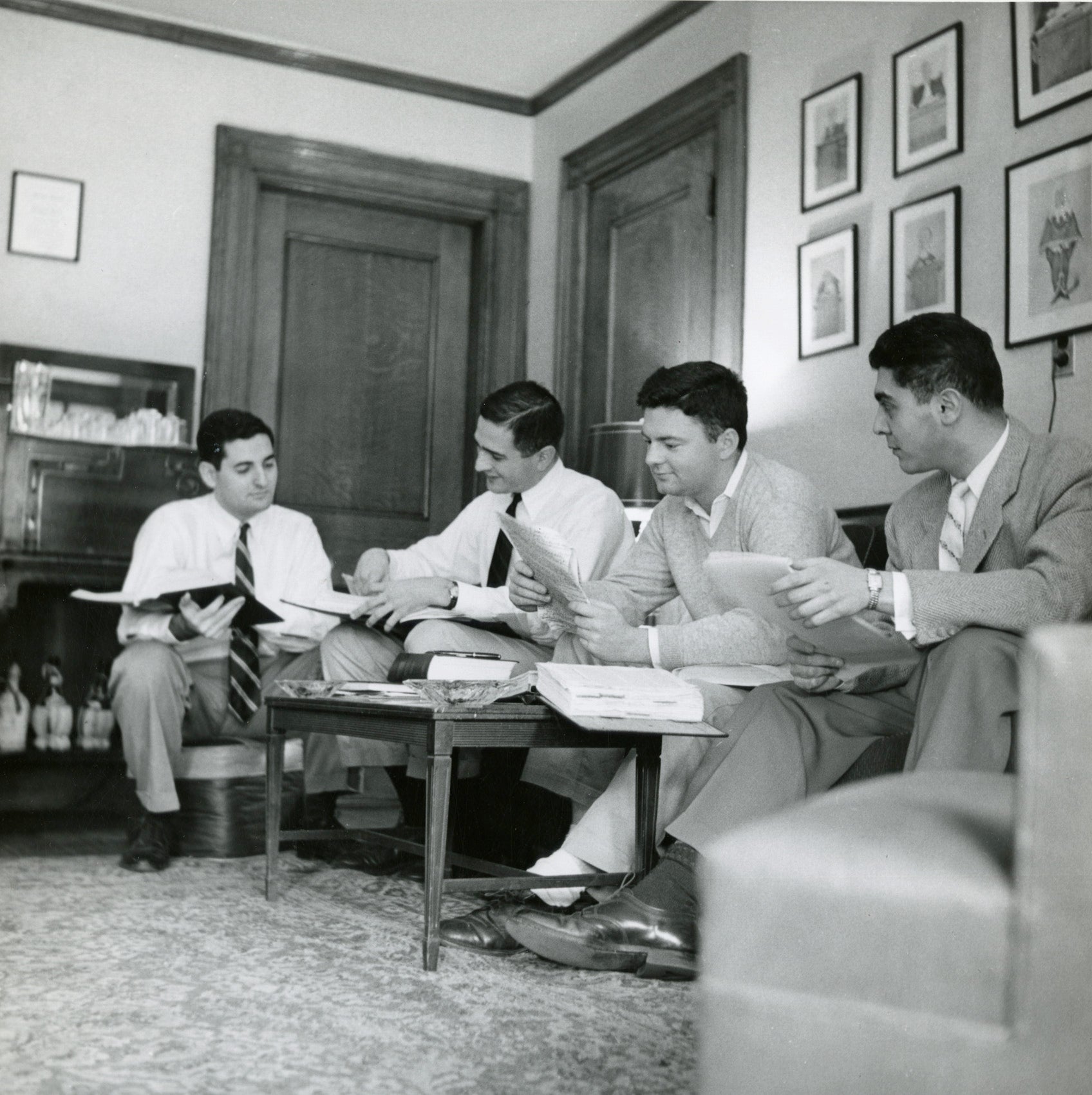
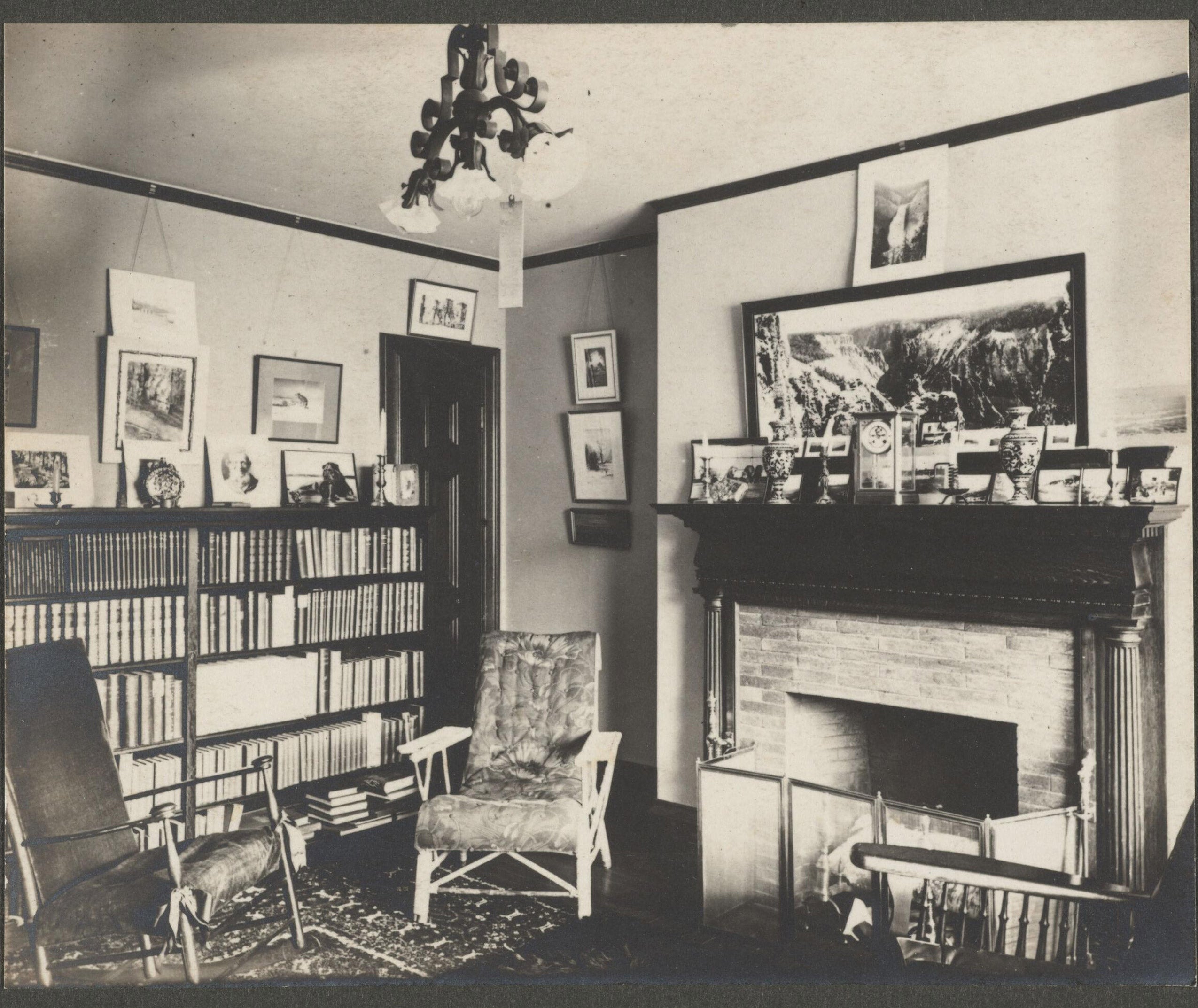
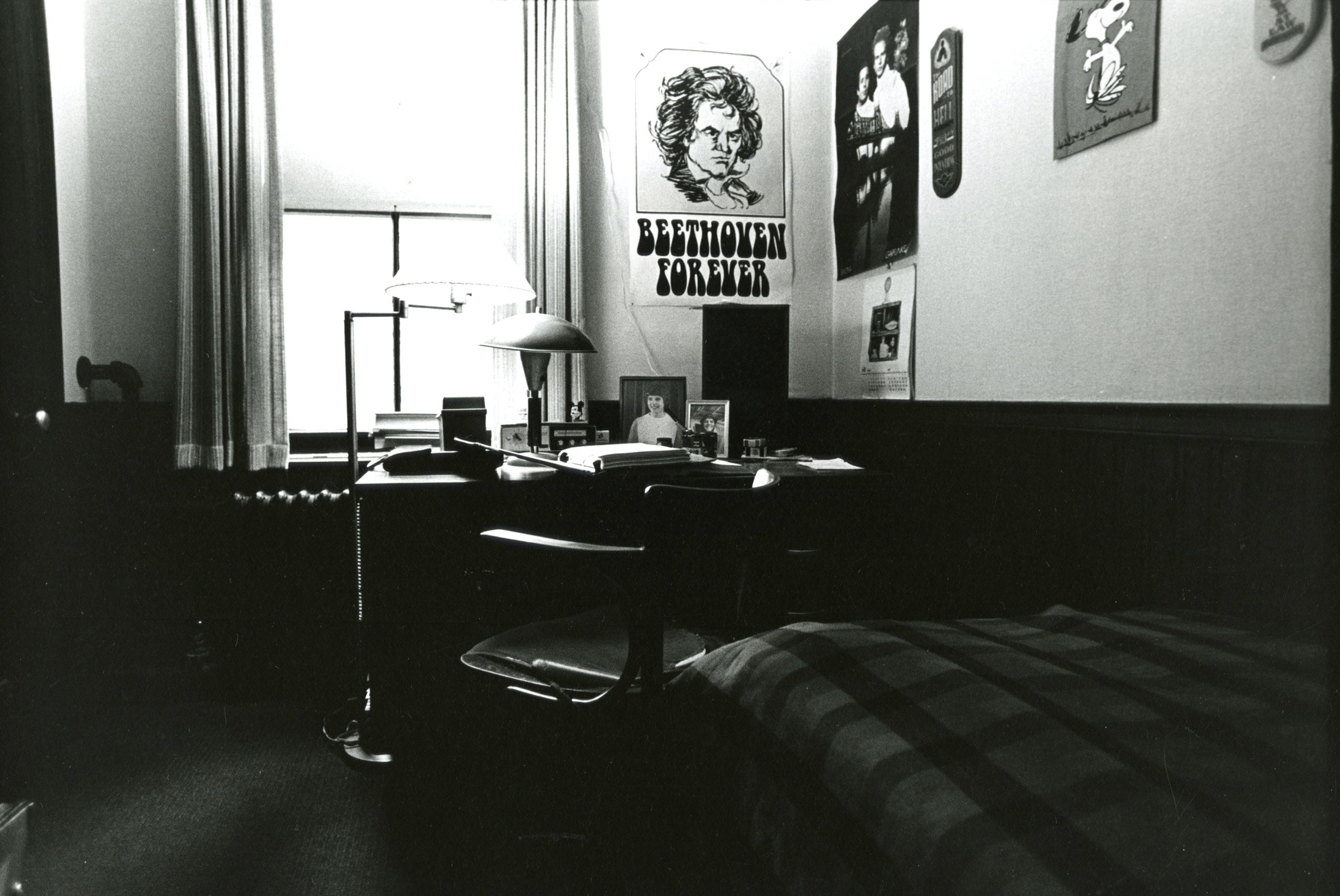
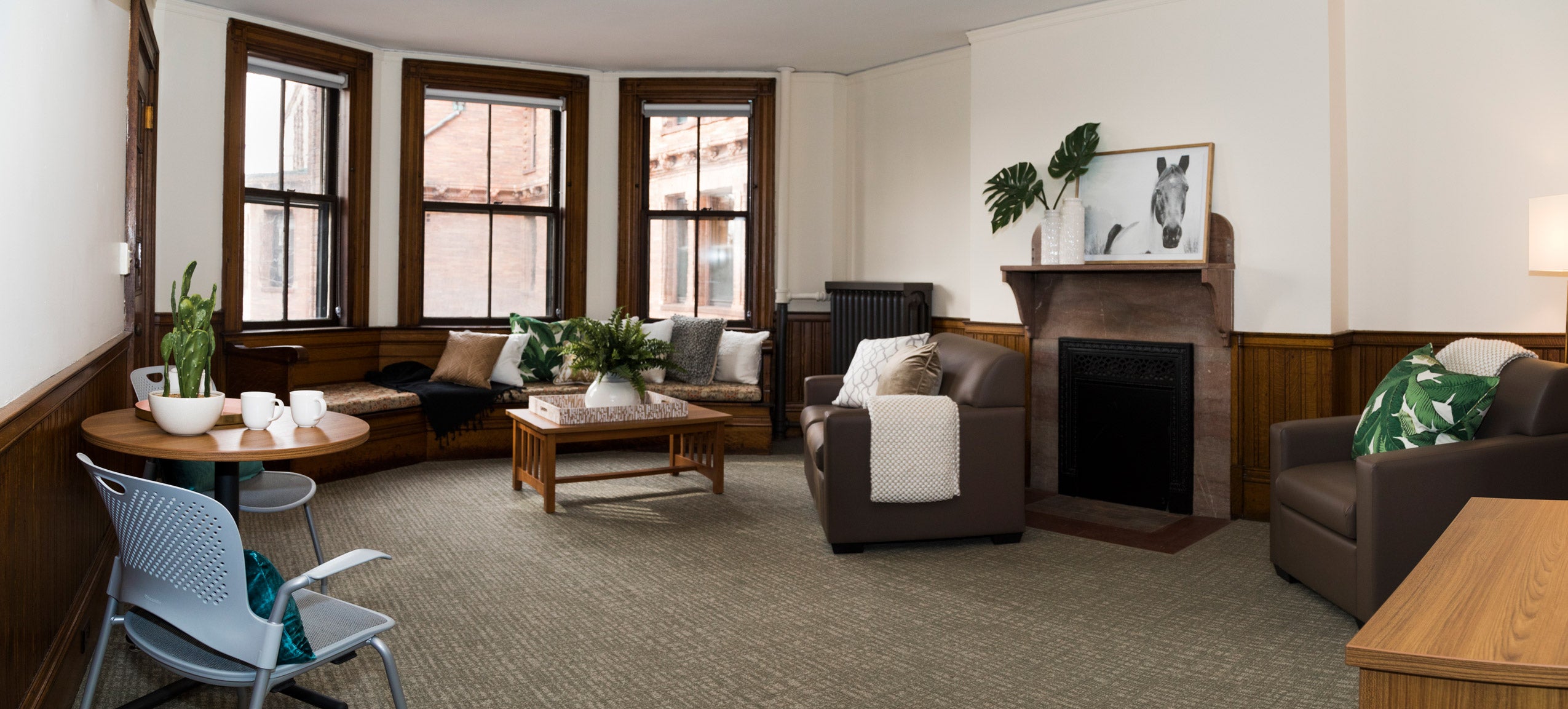
A collection of letters, from the Harvard Law School Library archives written by Albert F. Burt Harvard Law School Class of 1914, a resident of a nearby Harvard University dorm, offer a glimpse into dorm life in the early 1900s.

These are lively times in the dormitory; boxing matches in the common room, tennis and foot races in the hallways, organ and violent duet one evening, piano duet the next afternoon. Some of these I miss and am told about afterward, others I hear going on at the time, and still others I manage to attend. A musical streak struck here about two weeks ago, one evening we had two violins, a mandolin, and a piano, all going at the same time, but fortunately all acting independently each in a room by himself.
Albert F. Burt to Edward A. Burt, April 7, 1912

During World War I, the building housed activities related to the United States Naval Radio School, which occupied a portion of Harvard’s campus from 1917 to 1919. Training focused on preparing a corps of Morse Code operators for service. By Armistice Day in November 1918, enrollment reached its peak at 3,480 men.
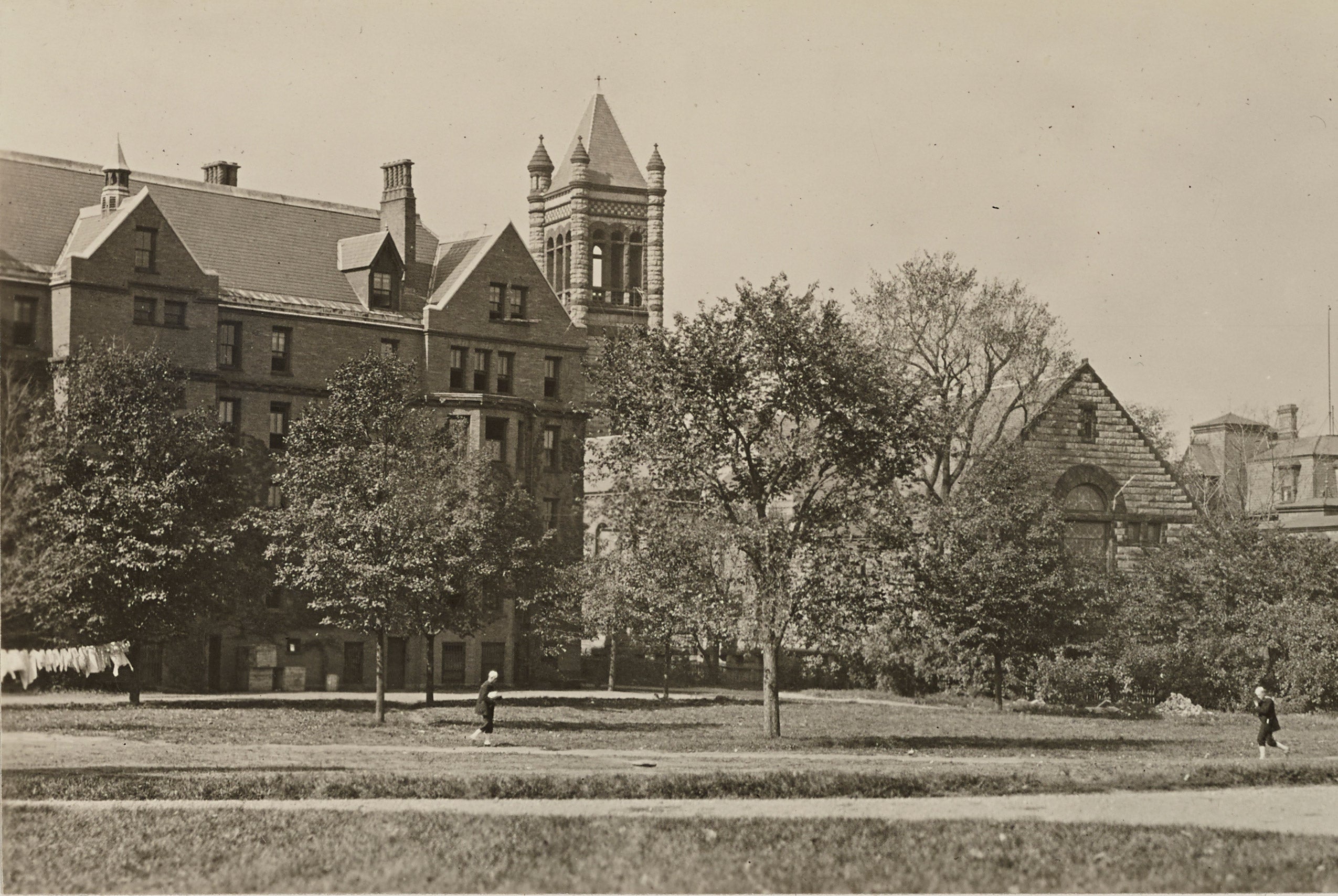
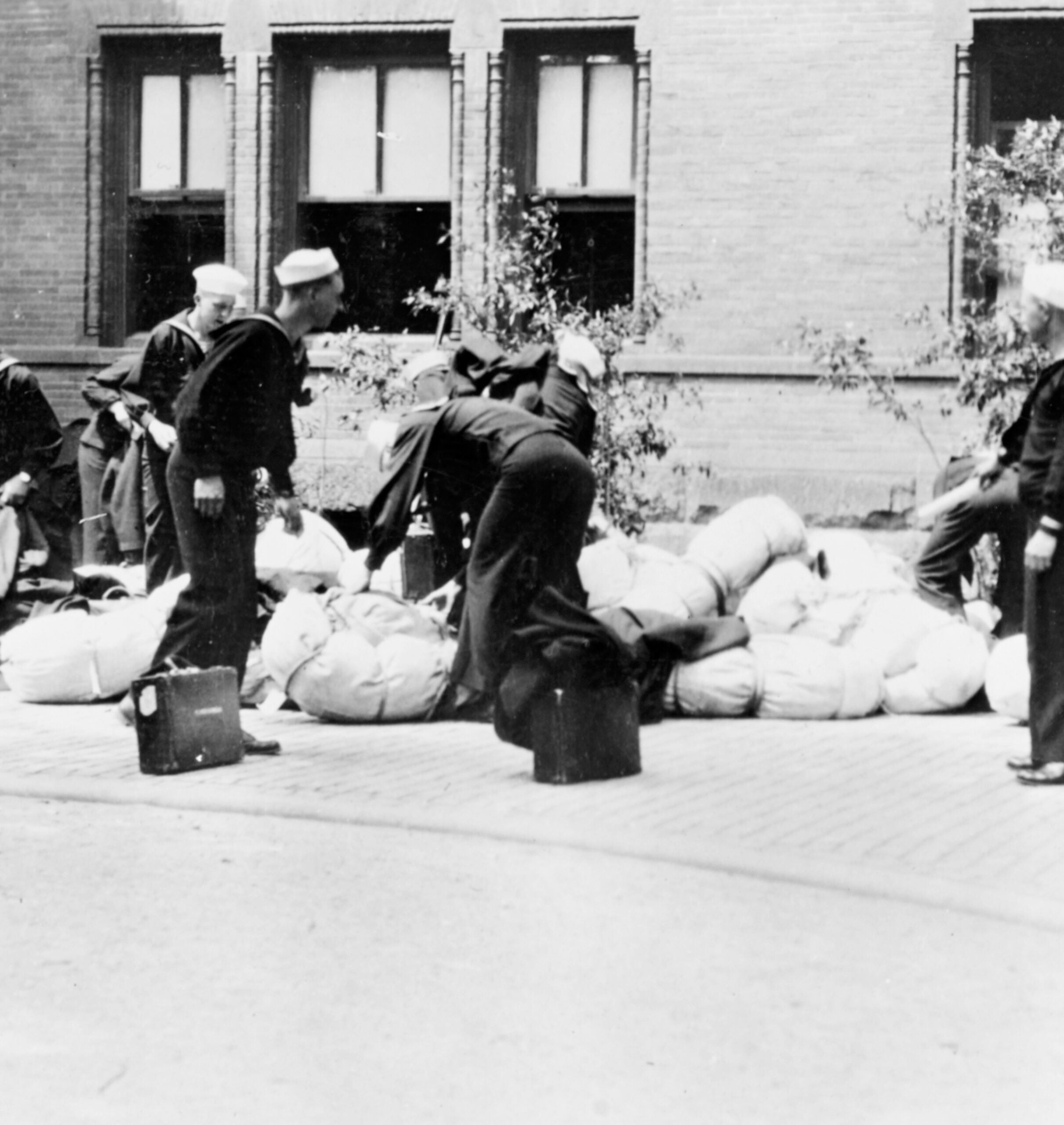

While the building was reserved for law student use as early as 1924, it wasn’t until the 1940s that the ownership of Hastings was transferred from Harvard’s Faculty of Arts and Sciences to Harvard Law School.
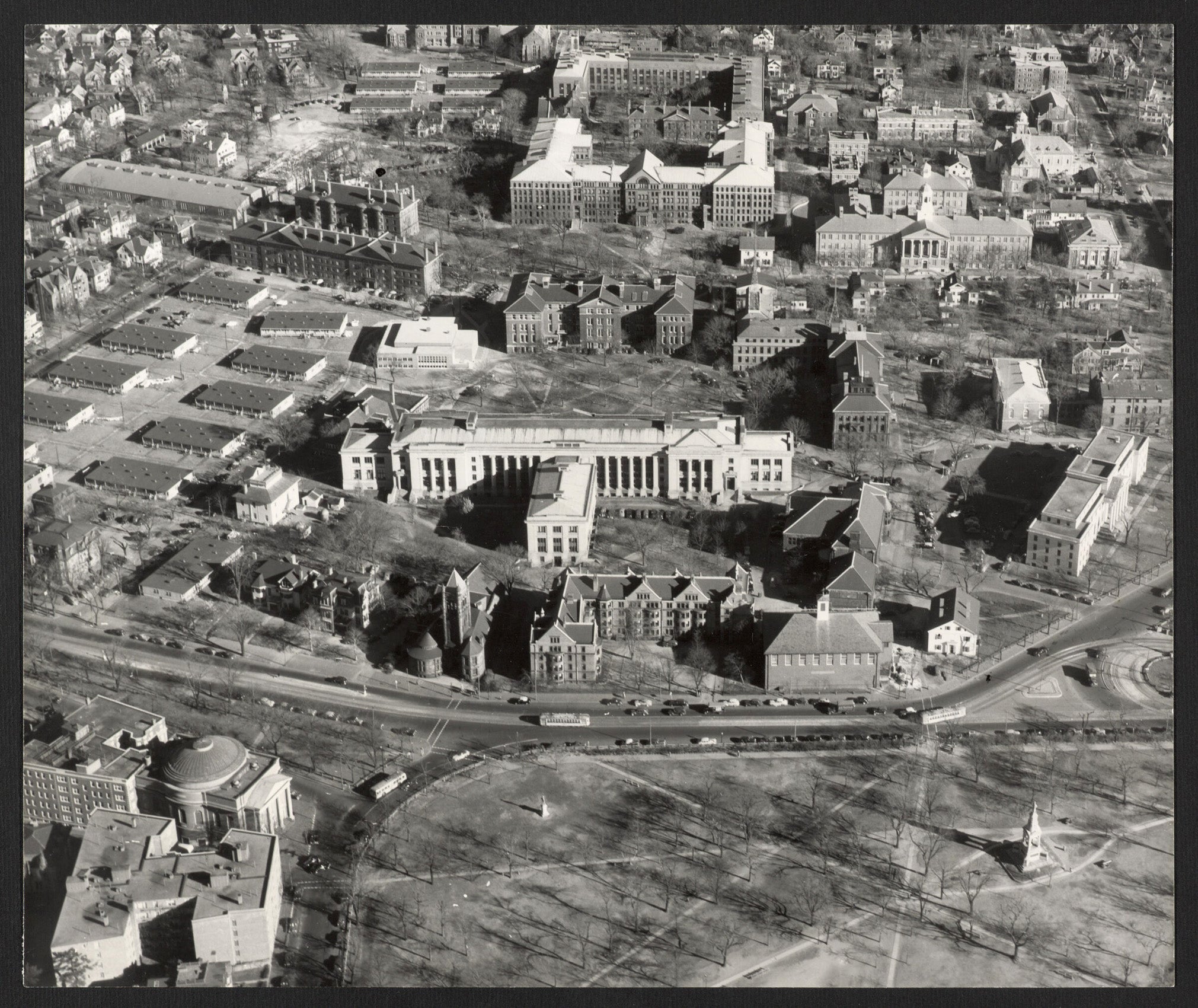
Over the years, the lower level of Hastings hosted a variety of occupants and served multiple purposes. For a period of time, the building’s custodian lived in a small apartment on the premises, complete with a working fireplace.
In 1946, a nursery school moved into the space. For just 25 cents a day per child, children of Harvard affiliates were cared for from 2 to 5 p.m. The nursery also operated during meetings of the Harvard Law Wives, an organization for the spouses of law students (women were not admitted to the law school until 1950).
The need for additional space on campus led to the relocation of the Harvard Law School Alumni Office, the Harvard Law School Fund, and the school’s dormitory office to Hastings in 1950. The area was adapted for alumni office staff, who compiled and consolidated the addresses of the school’s alumni—which at the time numbered 40,000—for publication in a new edition of the Quinquennial Catalogue, a comprehensive record of all Harvard Law School alumni.
In 1982, the Harvard Law School’s Publications Center, responsible for most of the school’s administrative publications and five student journal offices, was housed in Hastings’ lower level. For nearly 25 years, numerous Harvard Law School publications, including The Staff Connection, The Green Book, and the Student and Faculty Facebooks were produced there.
A former staff member fondly recalled: “Despite the quirks of Hastings basement, like the bars on the windows, we had a working fireplace that warmed us during parties and cold winter days.”
When the law school adopted a large Wang word processing system, the Publications Center received its own annex, connected by a trench dug between Griswold and Hasting Halls.
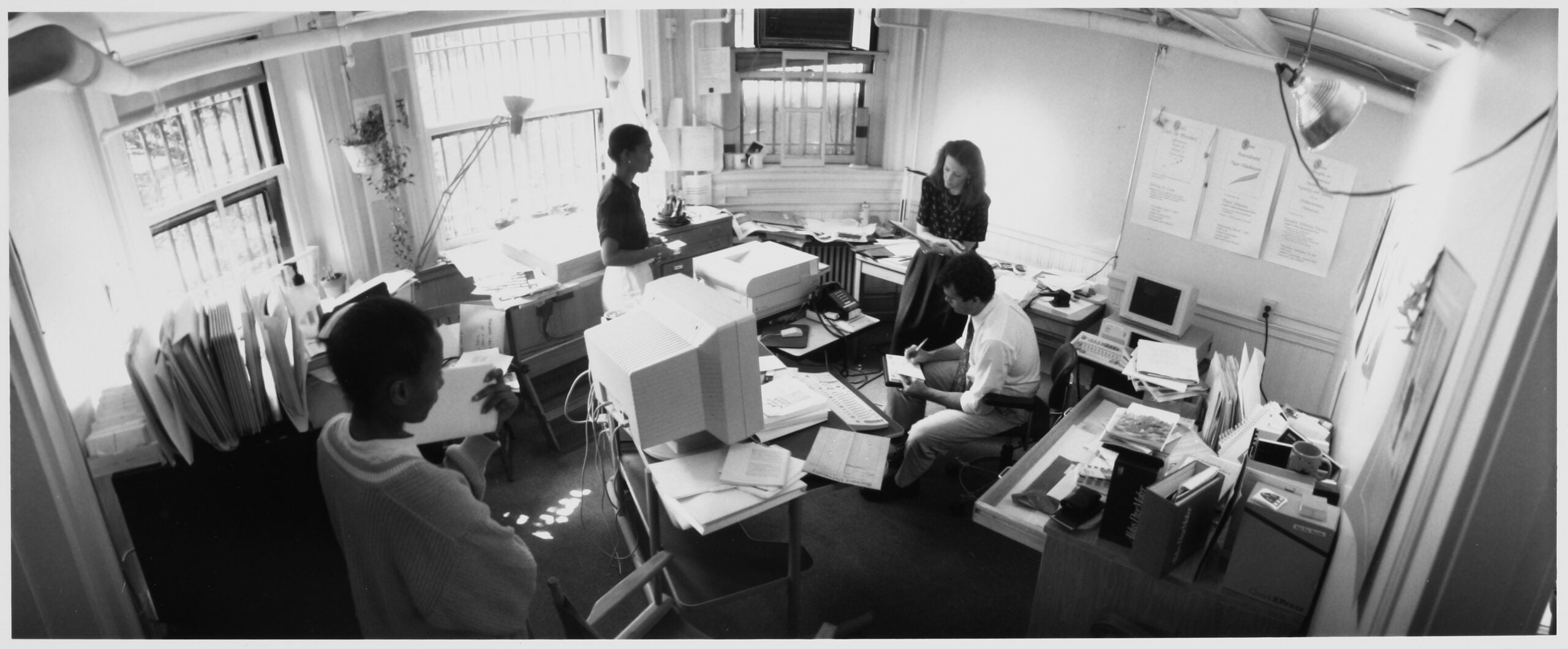
Today, the top floors of Hastings provide living quarters for ninety-seven students. Hastings has 25 one-person studios and 72 two-bedroom suites, many with bay windows.
In 2024, Hasting Hall underwent a major mechanical upgrade throughout the building, improving overall climate and energy performance.
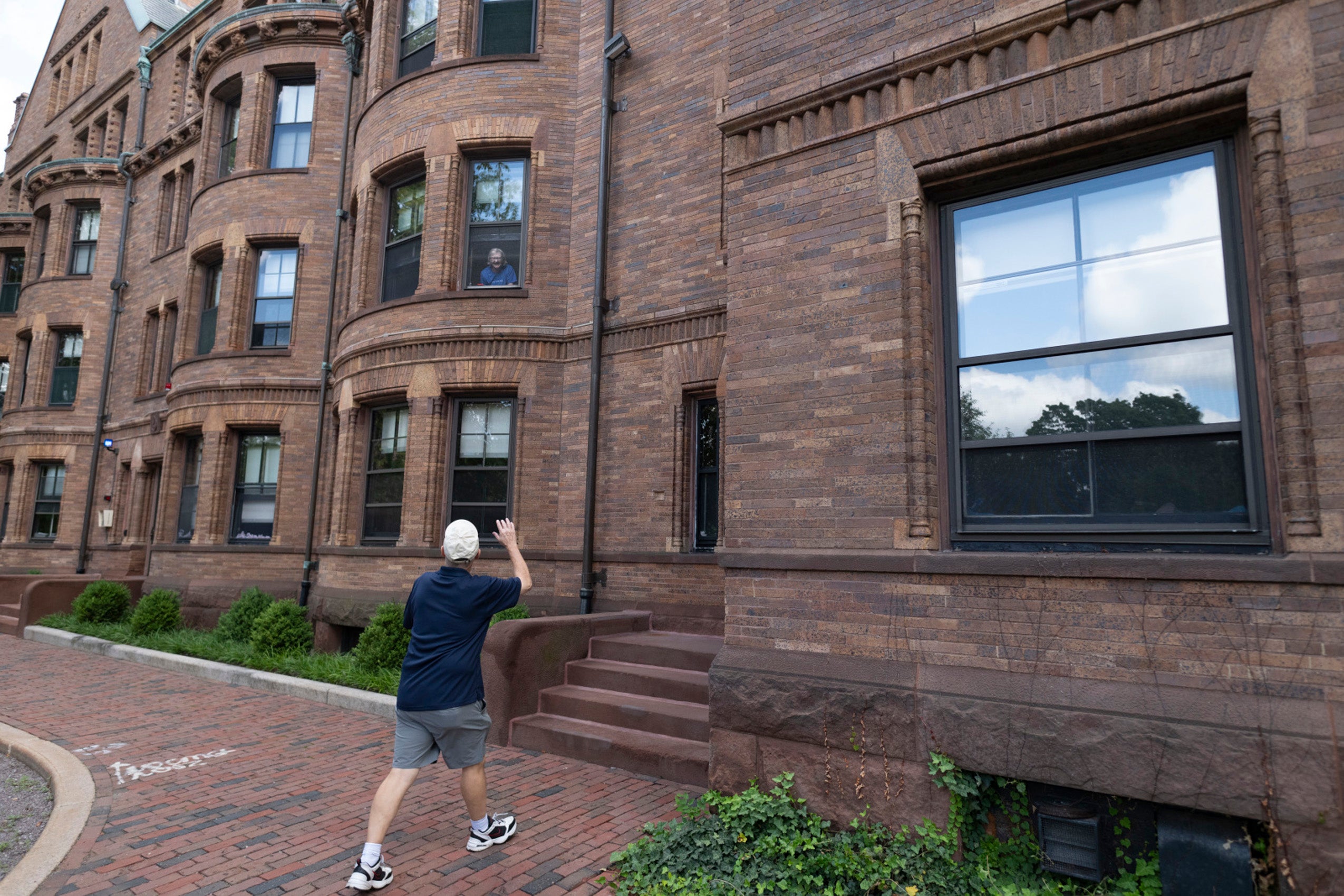
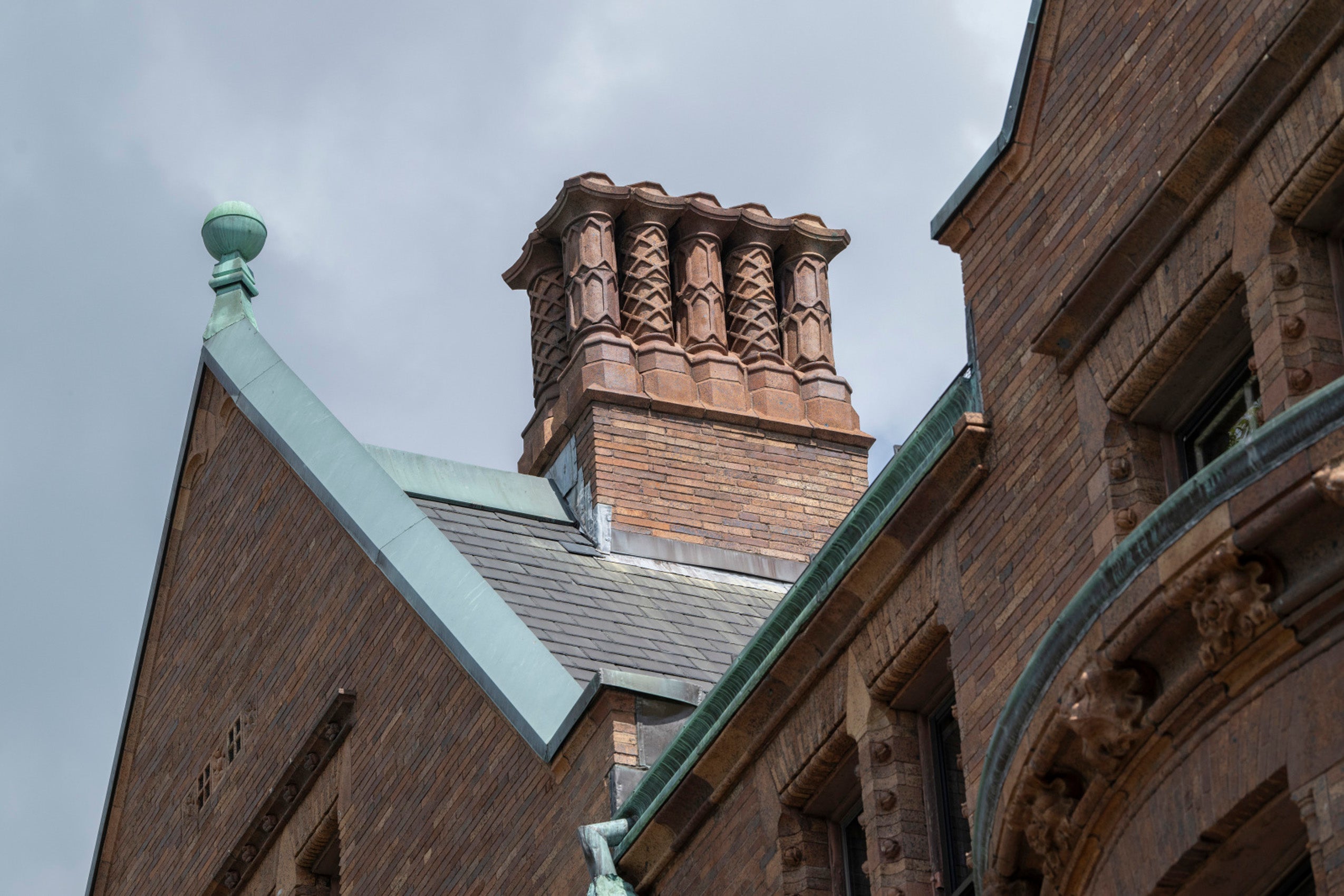
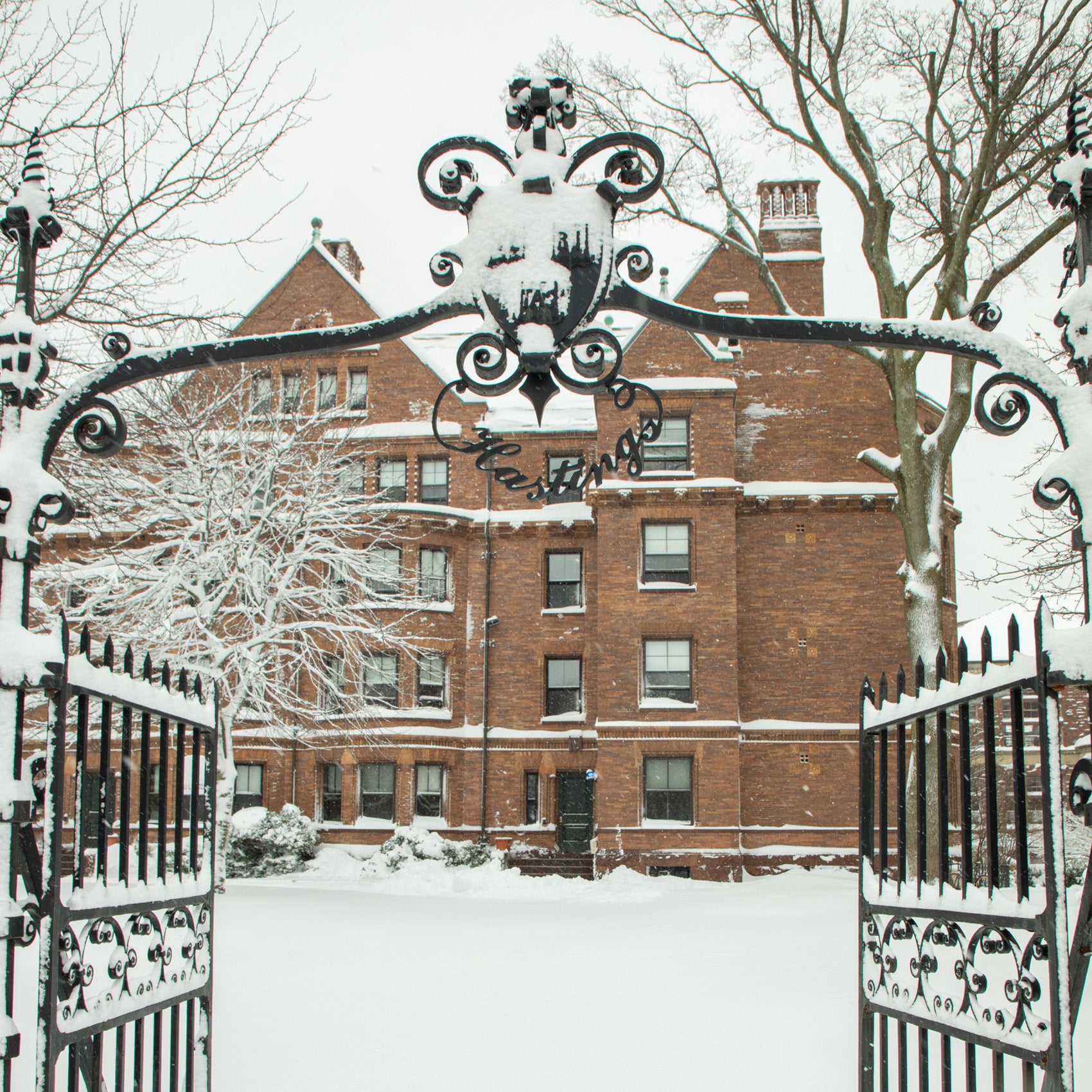
Special thanks to Mik Hamilton, digital archive manager, Harvard Law School Communications Office, and Lesley Schoenfeld, public services & visual collections administrator, Historical & Special Collections for research and editorial assistance.
